How to replant indoor flowers at home, choosing a substrate

Growing any plant, from the moment it enters the house, must begin with transplantation. However, not everyone knows how to replant indoor flowers at home, which ultimately causes great damage to the plants. Therefore, before you start transplanting, it is recommended to study the rules.
Content:
- How to replant indoor flowers at home when replanting is required
- Proper transplantation of indoor flowers: which pot to choose
- Replanting indoor plants, which substrate is best to use
- How to transship indoor flowers
- How to replant a store-bought flower
- How to replant flowers with drainage
How to replant indoor flowers at home when replanting is required
As any plant grows, the volume and its root system increase. The latter is important to consider from time to time replant the flower in a new container, otherwise there is a risk that growth will slow down.
A direct signal for replanting is the growth of roots through the drainage holes. In this case, a transplant is simply necessary.
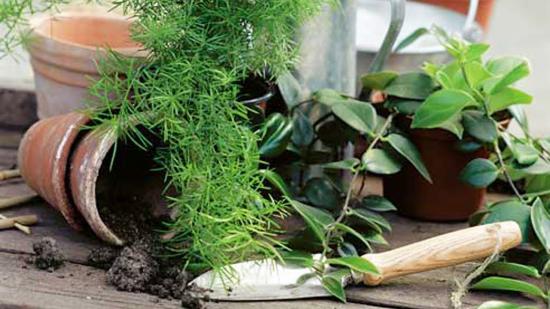
In addition, transplantation is recommended when:
- The green pet is affected by pests or diseases;
- Lack of micro- and macronutrients.
When replanting, it is important to take into account not only the condition of the green pet, but also the time of year and the individual properties of the variety.So it is better to replant in the spring, during the period of active growth, but before the formation of buds.
In addition, it is worth considering such features as:
- Refers to annuals or perennials. The latter are recommended to be replanted no more than once a year or even several times. Succulents can easily grow in one container for up to six years;
- Before transplanting, it is important to familiarize yourself with the lunar calendar: it is not recommended to do it during the full moon, but the waxing moon has a beneficial effect on growth. Landings made on days when the moon is in the signs of Cancer, Taurus or Pisces give especially good results.
Before starting the transplant, it is necessary to prepare a new container, which should exceed the previous one in diameter by no more than a few centimeters.
Before planting directly, the pot must be scalded with boiling water, after which:
- Place a drainage layer of expanded clay or fine gravel at its bottom;
- Pour a substrate over the drainage, which must meet the plant’s needs for nutrients and acidity level. The soil must allow air and moisture to pass through.

You can determine whether it is necessary to transplant it into a new container as its root grows. When moving to a new habitat, it is important to follow some rules, otherwise the flower may suffer.
You can learn more about replanting indoor plants by watching the video:
Proper transplantation of indoor flowers: which pot to choose
The first thing that is important to consider when choosing a container is size. You should not radically replace a tiny pot with a huge analogue of a bucket; the difference between the previous and next pot should not exceed four centimeters.
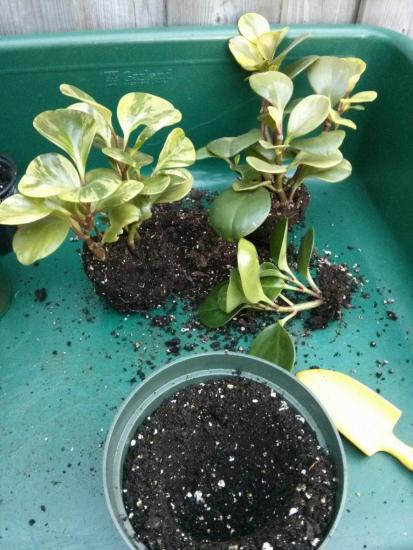
When choosing, it is recommended not to forget that drainage is important for any specimen, so pots without holes in the bottom will not be suitable. When water stagnates, the roots rot, which leads to the death of the entire plant.
Clay is considered the most optimal pot material - it is an environmentally friendly material with a porous structure that is most suitable for your beloved green pet. However, nowadays most people prefer plastic.
It is convenient, durable and inexpensive; if necessary, such containers are easy to deform and even cut.
When choosing a new home for your green pet, it is recommended to pay special attention to several details: the size and presence of drainage holes.
These two factors must necessarily meet the requirements.
Replanting indoor plants, which substrate is best to use
Some believe that garden soil is quite suitable for replanting, others are firmly convinced that the best option would be to purchase a ready-made substrate, both sides disagree.
Garden soil is not always enriched with all the necessary nutrients and often hardens in a pot after the first watering. Ready-made substrates do not consist of soil, but of peat mixtures, which are unstable, dry out quickly, and after drying do not absorb water well, which is not good for all flowers.
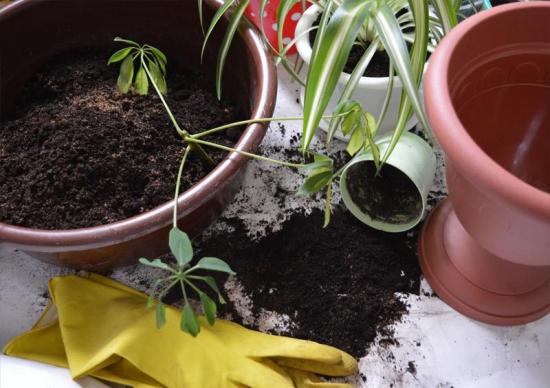
In addition, fertilizers in such mixtures penetrate the roots faster, but are also washed out faster, putting the green pet at risk of an excess or, conversely, a lack of nutrients.
The only ready-made mixture that does not have such unpleasant properties is the one that contains vermicompost. But such mixtures are more expensive and are not found in all stores.
However, you shouldn’t get upset ahead of time; you don’t have to spend money and time searching for the right composition.
You can make the substrate yourself; for this you need to prepare:
- Turf soil has a porous structure. It is recommended to remove a layer of soil up to 20 cm deep, thoroughly crush it and sift through a sieve. Discard the roots and foxes, the resulting turf soil can be used;
- Deciduous soil - characterized by looseness and a large amount of nutrients. To harvest in a place where the leaves have not been removed for several years, remove the top layer of foliage and dig out the soil to a depth of 15 cm, this is what you need;
- Humus soil - has a light and loose structure, is also rich in useful elements, and is a product of rotting manure;
- Sand - lake or coarse river sand is best.
To create an optimal soil mixture, it is recommended to prepare the substrate in accordance with certain rules.
So, depending on the needs of the species, the substrates differ:
- For trees, dracaenas and large flowers, a heavy mixture of a third of turf soil, one leaf soil and one sand is suitable;
- For small shrubs, spathiphyllums and other representatives of the average root system, a medium mixture of sand, twice its volume, turf and twice as much humus or deciduous, is suitable;
- For herbaceous species and flowers with a delicate root system, a light mixture of turf soil and sand, taken one part each and three parts humus, is suitable.
A self-prepared substrate will not only be much more suitable for green pets, but will also be guaranteed to be of different quality.In addition, self-harvesting will require the gardener to waste time, not money.
How to transship indoor flowers
First of all, it is recommended to prepare a new container and ready-made substrate in advance.

After this, you need to take into account a number of simple rules:
- A few days before moving, the soil needs to be moistened so that the earthen ball does not disintegrate during transportation;
- To remove a lump from an old pot, you need to carefully knock on its walls first and run a knife along them, separating the substrate from the walls;
- Carefully pull out, tilting the pot slightly, do not pull on the stem or leaves so as not to damage them;
- Carefully inspect the roots for pests, signs of rot or disease. It is recommended to remove damaged roots; if pests are detected, a complete replacement of the substrate is necessary;
- At the bottom of the new container, lay out a drainage layer, sprinkle it with a layer of new substrate and place an earthen lump on top of it, filling the distance between the walls and the lump with new substrate;
- After transferring, place the pot for several days in a shaded place;
- Young specimens can be watered the next day after transshipment, adults on the third day.
It is important to understand that some representatives of the flora can be moved to a new place of residence solely by transshipment. Cypress trees, dracaena, palm trees, cycas and fatsia trees do not tolerate regular transplantation very well.
In especially severe cases, they may even die due to minor mechanical damage to the root.
The transfer method compares favorably with conventional transplantation in a number of ways, but the main thing is the fact that when transferred with a clod of earth, the root is not damaged.At the same time, the green pet can easily receive useful substances from the new substrate, the old one will not become a hindrance.
In addition, transshipment does not cause stress to the green pet, but only if done correctly without damaging the roots, which can significantly harm any plant.
It is important to consider that transshipment is recommended to be done a little more often than replanting, since the substrate is not completely renewed. However, this does not mean that the flower for some reason does not receive enough useful elements.
The safety of transshipment is also demonstrated by the fact that it can be done even during the budding period, without harm to the green pet.
How to replant a store-bought flower
Beautiful and neat plants that come into the homes of hobbyists from the shelves of flower shops can soon begin to fade. This is due to the fact that plants arrive in stores with “transport” soil - peat enriched with nutrients.
This substrate is not suitable for long-term cultivation, so it is recommended to change it immediately after purchase.

When replanting, it is important to carefully examine the root, since often unpleasant guests such as thrips, woodlice or even simple ants can get onto the windowsill from shops or nurseries. If this is not done, there is a danger of harmful insects spreading throughout the apartment greenhouse.
But don't panic if you find a problem. It can be solved with immediate quarantine, soapy water or special medications.
In this case, the transshipment method should be postponed. In order to replant the plant correctly, it is necessary to prepare in advance the soil mixture, expanded clay for drainage, scissors and a container.
When performing a transplant, it is recommended to adhere to a number of rules:
- Carefully remove the flower from the store container and just as carefully clean the roots from the soil;
- At the end of cleaning, carefully lower it into a container of warm water and rinse off the remaining soil. In this case, it is important not to touch healthy roots, but you can remove those damaged by rot or dry ones;
- For prevention purposes, it is worth placing the roots in a fungicide solution for half an hour. This will help protect the new pet and disinfect it if it has already been damaged;
- Before transferring the plant to a new container, place a layer of expanded clay at the bottom and cover it with a small layer of soil mixture;
- Carefully holding the flower, place it in the center of the pot and straighten the roots. Slowly cover them with soil, pressing down gently. It is important not to overdo it, so as not to cause harm;
- Do not fill the soil above the level of the root collar, but keep in mind that there should not be any bare roots left outside the soil;
- You can water the transplanted specimen immediately if its root is absolutely healthy and shows no signs of rot damage. However, if during the process of moving to a new place of residence it was necessary to cut out some of the damaged roots, watering can only be done after a few days, during which time you can only spray the foliage with water.
At transferring purchased plants to a new pot, it is important to take into account some features, but there are not so many of them to confuse even an inexperienced gardener.
It is also important to take into account that fertilizing can be done in the second month after transplantation, and if you purchased a new pet with flowers, wait until flowering comes to an end, or remove the buds manually.
How to replant flowers with drainage
Drainage is an important point in planting any plant. Placed on the bottom of the pot to increase water permeability. For drainage, it is recommended to use expanded clay or gravel; if they are not available, small crushed stone or other small stones will do.
The thickness of the drainage layer for small containers should not exceed a centimeter, and for large ones - five.
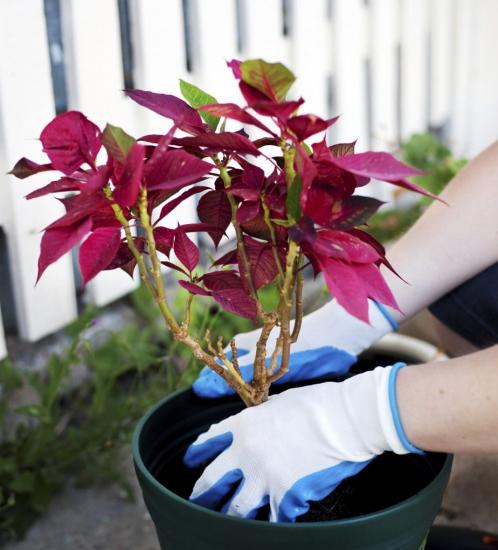
On top of the bottom layer is a soil mixture suitable for the specific crop. It is important to consider that heavy mixtures can be fatal for light lovers, so it is not recommended to forget about this when preparing the mixture.
Ultimately, the soil level should not exceed the edge of the pot or be level with it. In this case, water will pour over the edges and flow into the pan, without having time to penetrate into the depths and moisten the root.
The structure of the soil affects the development process of the plant. Thus, a loose structure promotes the activation of growth, and a dense structure promotes the formation of buds.
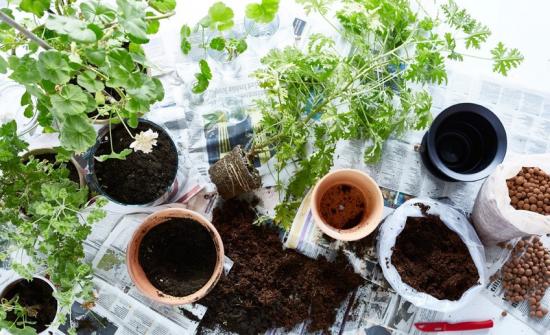
The drainage layer at the bottom of the container increases the water and air permeability of the soil, prevents root rot and subsequent death of the plant. Therefore, a layer of fine crushed stone or expanded clay is an important element in replanting.
Transplanting a plant into a new container at home is quite simple, but it is important to take into account a number of nuances, which include selecting a container, soil mixture, and even being careful when transferring from one pot to another.
However, if the transplant is carried out correctly, the flower will receive minimal stress and you will not have to wait long for the first flowering or abundant branching.
We invite you to watch an interesting video about when and how to replant indoor flowers:


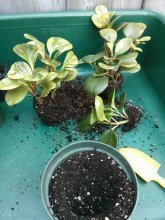
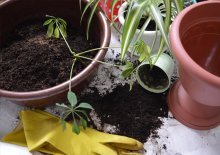
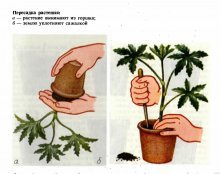

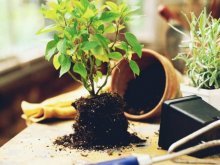



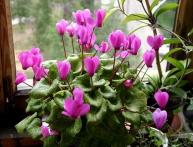




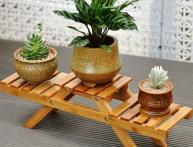

Comments
I go to stores specifically and buy a specific soil for each type of plant, because if you just dig up the soil from the garden and mix it with something, it won’t be what you need. Our land is bad.
If I have to replant indoor plants, I experiment a lot with the soil, try to bring some soil from the forest, mix it with humus, sometimes add coffee grounds and tea leaves. Most often this gives a positive result.
We have replanted indoor flowers many times. The main thing is good soil, we always buy it in the store. Then, good drainage so that the flower does not get wet and the roots do not begin to rot, and the last thing is care when replanting the flower itself so as not to damage the roots.
I usually buy ready-made earthen mixture in the store for replanting, although judging by the article, it’s not entirely correct to do so. I know that many people use soil from molehills, for example, my mother takes this soil for her seedlings. It seems that it can also be used for plants if mixed with a peat mixture, at least for some species. It’s a pity that there are no moles in my area, otherwise I would try :)